There is more to testing the accuracy of a springer than you might think; here, we explore how to test & which anomalies to look out for!
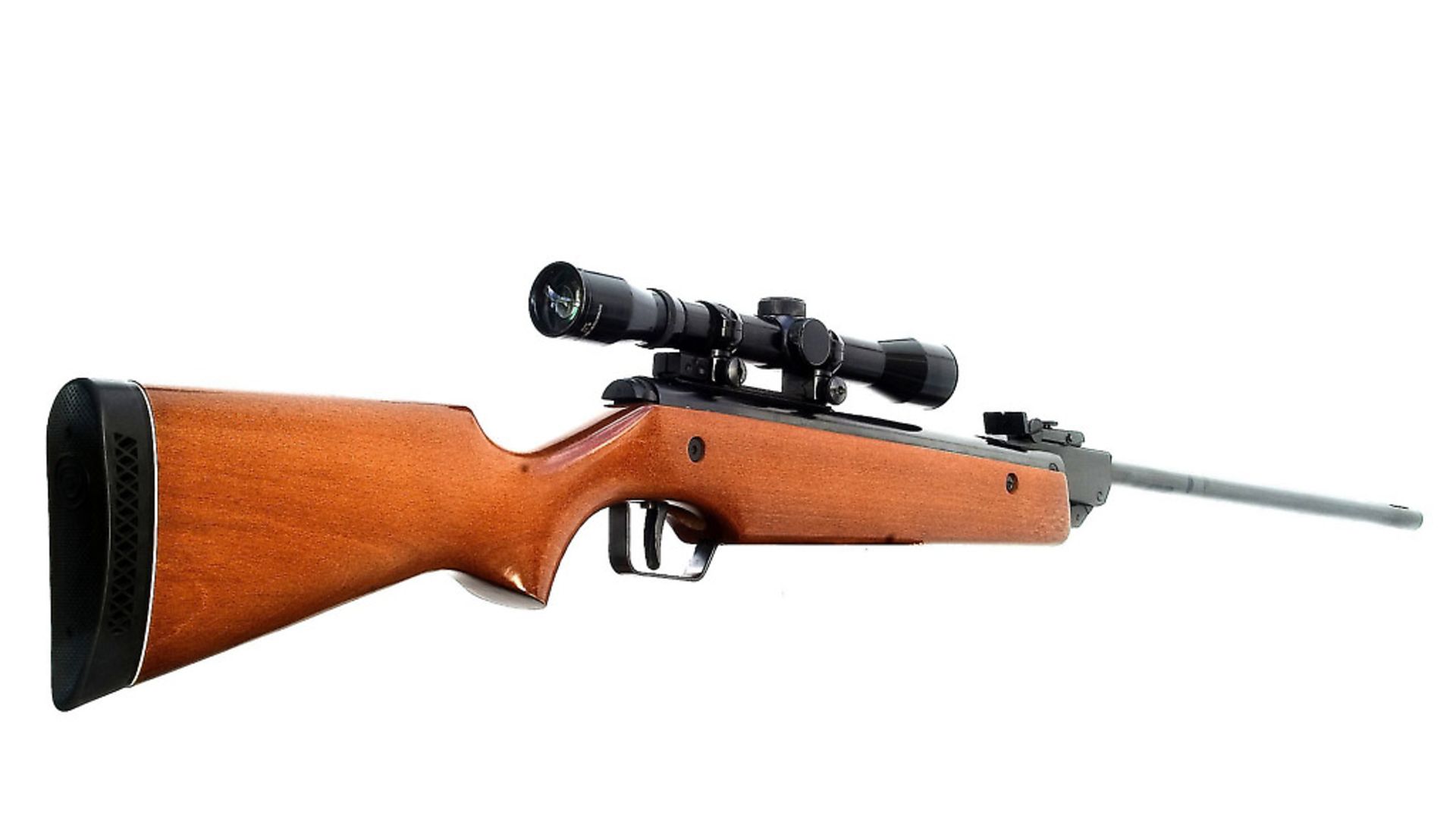 credit: Archant
credit: Archant
A great many people, it seems, judge springers, and especially any that have been modified, mainly by how smoothly they cock, how quiet or noisy the shot cycle, and by subjective impression of the shot cycle, none of which is quantified (measured), but limited to usually vague and fairly meaningless verbal description. In fact, the only aspect of the shot cycle that most people can measure is muzzle velocity, and in the absence of any other even vaguely scientific measurement, great store is placed on, and all sorts of conclusions are read into, chrono readings, many of them erroneous.
There is one other measure of the springer’s performance that’s available to all, and that is accuracy. Unlike testing velocity over a chrono, testing the accuracy is not simple, it’s not convenient, it is very difficult to do properly, and the result might not be entirely trustworthy, as I discovered many years ago.
 credit: Archant
credit: Archant
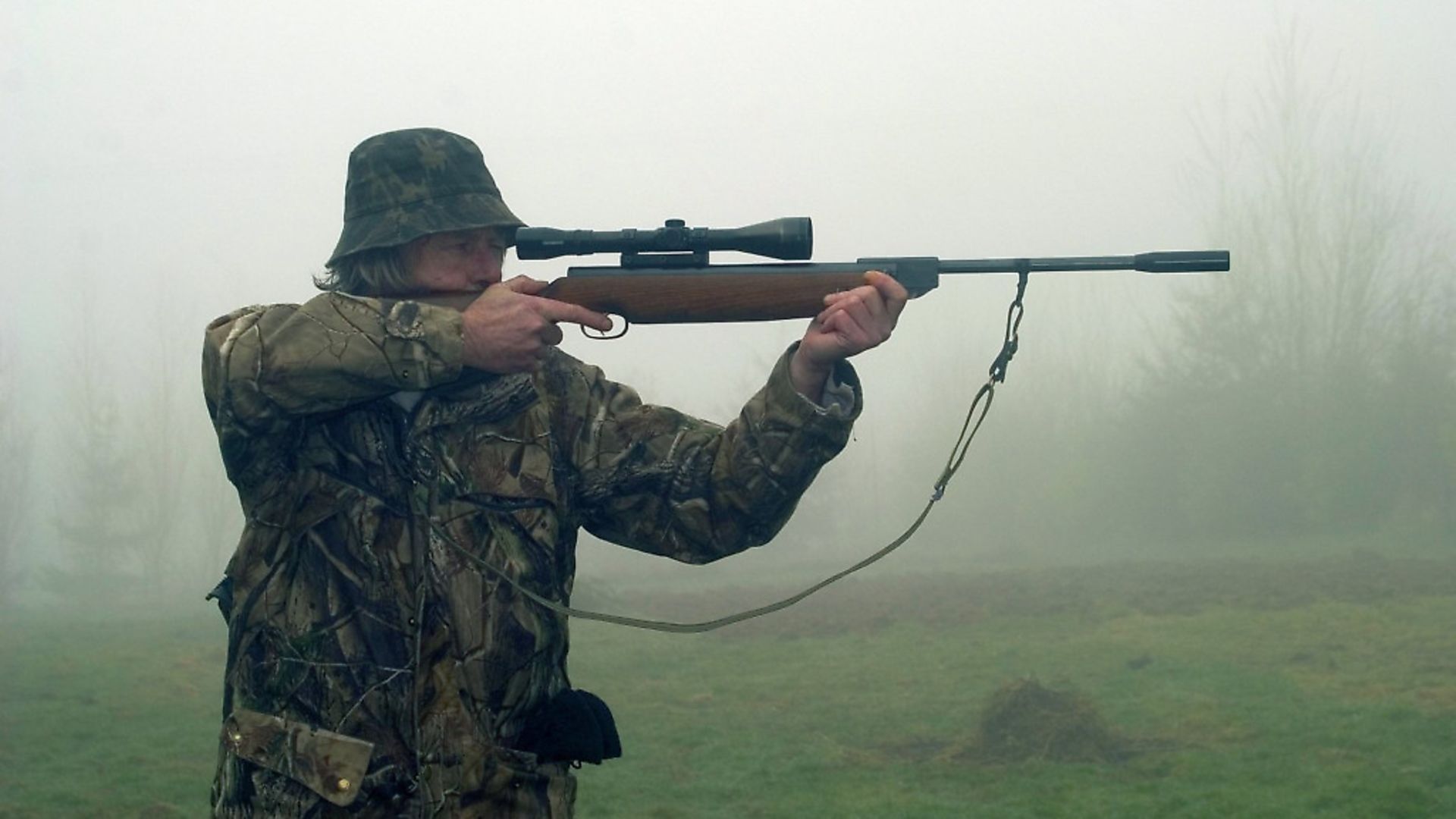 credit: Archant
credit: Archant
ACCURACY RESULTS
In the mid-1980s, I found myself writing reviews of most of the top springers of the day and, from the outset, decided it would be a good idea to test, and publish, the accuracy results for each. Perhaps even more valuable than the comparison of accuracy between rifles was the fact that I was able to test a range of pellets with each rifle, so that readers knew which pellets would give the best accuracy if they subsequently bought an example of a test rifle.
Although I had access to a lot of local farmland to shoot over, for serious accuracy testing I needed somewhere sheltered from the wind, and settled for my back garden, which was very sheltered, but limited in range to 23 yards.
Twenty-three yards might not sound far for accuracy testing, but for many 1980’s springers, and the majority of 1980’s pellets, it was quite far enough to separate the best from the also-rans. As it happened, the most accurate rifle was the first rifle I tested, and it was the RWS 45.
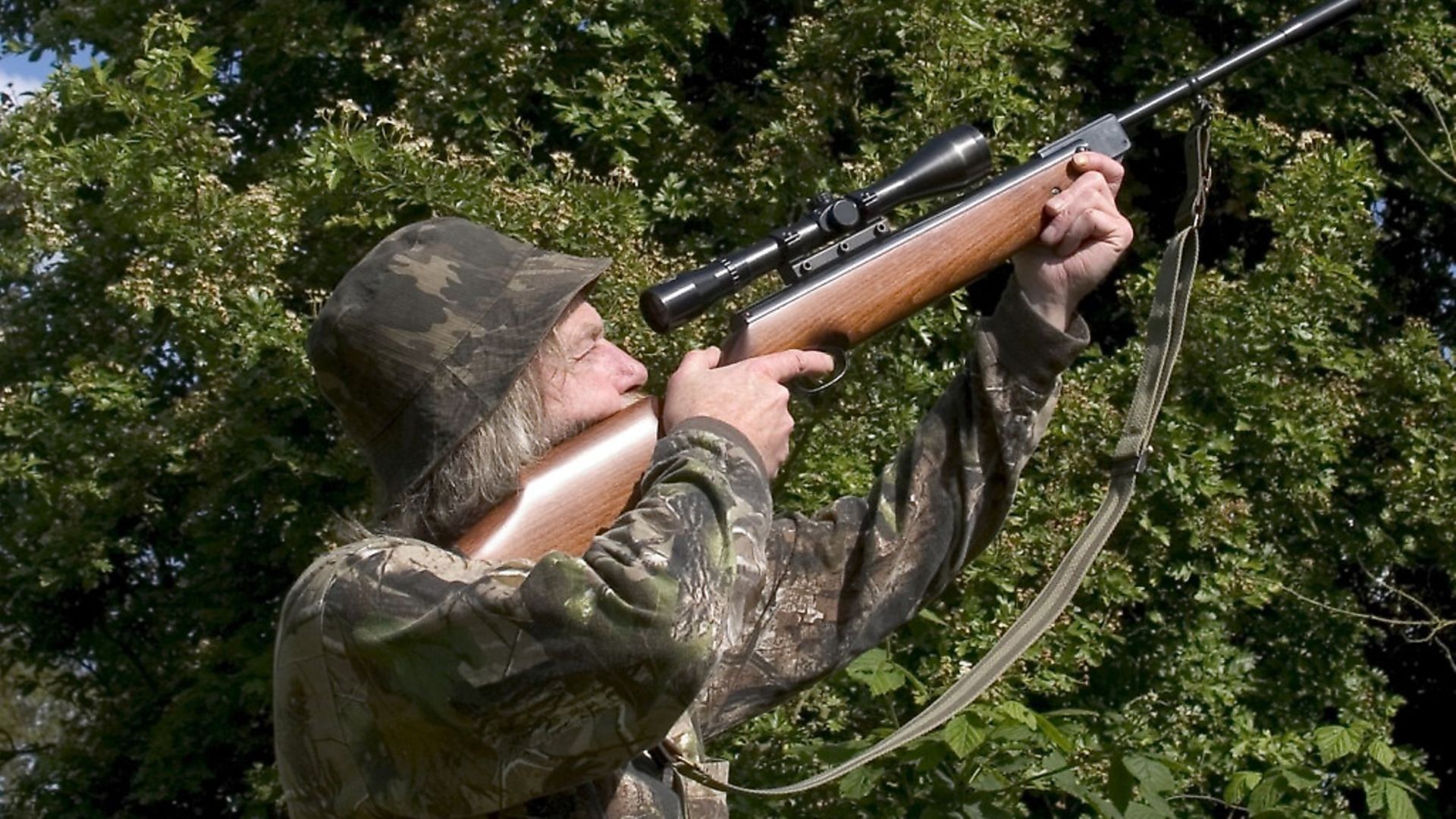 credit: Archant
credit: Archant
The RWS 45 was the action of the established Original 45, a big and hefty springer made in Germany by Mayer & Grammelspacher (and sold in its home market as the Diana 45), but fitted with a handed stock that bore a passing resemblance to the contemporary stock of the HW80, and which was an improvement on the quirky ambidextrous stock of the Original variant.
The Original 45 had been designed for the unrestricted North American market to compete with other ‘magnum’ springers, and the muzzle energy had to be reduced for the UK market. Despite being tamed down for the UK, and despite being a hefty 8lbs, the ‘45s heavy piston and long stroke gave it a lot of recoil displacement, made a little more manageable by a short drop to heel, which reduced muzzle flip.
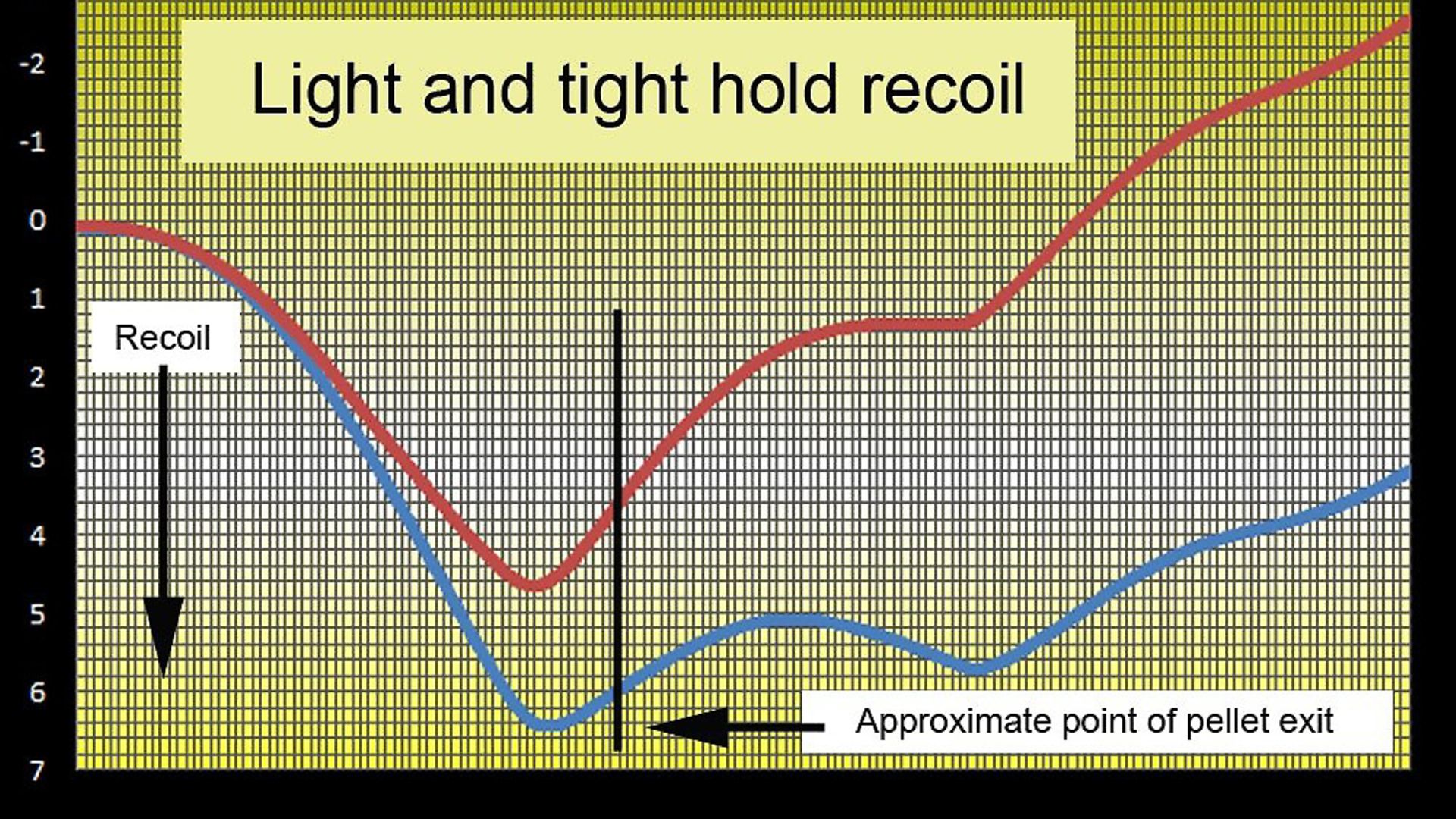 credit: Archant
credit: Archant
TESTING springer accuracy
Trying to assess the accuracy of an airgun, and not the technique of the user, is not an easy matter. Then, as now, I test from a bench, with the rifle’s fore end, and the toe of the butt pad, sitting on cushions, which have enough ‘give’ to allow the rifle to recoil relatively unimpeded, and with minimal interference from me. The target I favour is card, and the rifle set up to hit around an inch under the aim points, so that the aim point remains the same whilst the group forms underneath it.
My technique is to rest the fore end on a pile of cushions and to use my left hand, holding the lower edge of the stock toward the butt pad, to aim. My right hand barely touches the rifle, which helps me to pull the trigger blade without putting any force on the stock that could otherwise pull the shot off target.
Even with the weight of the rifle being largely taken by its supporting cushions, and minimal input from the user, absolute concentration and flawless technique is needed for each and every shot, and that can be difficult to maintain over a long course of testing. It’s worth the effort.
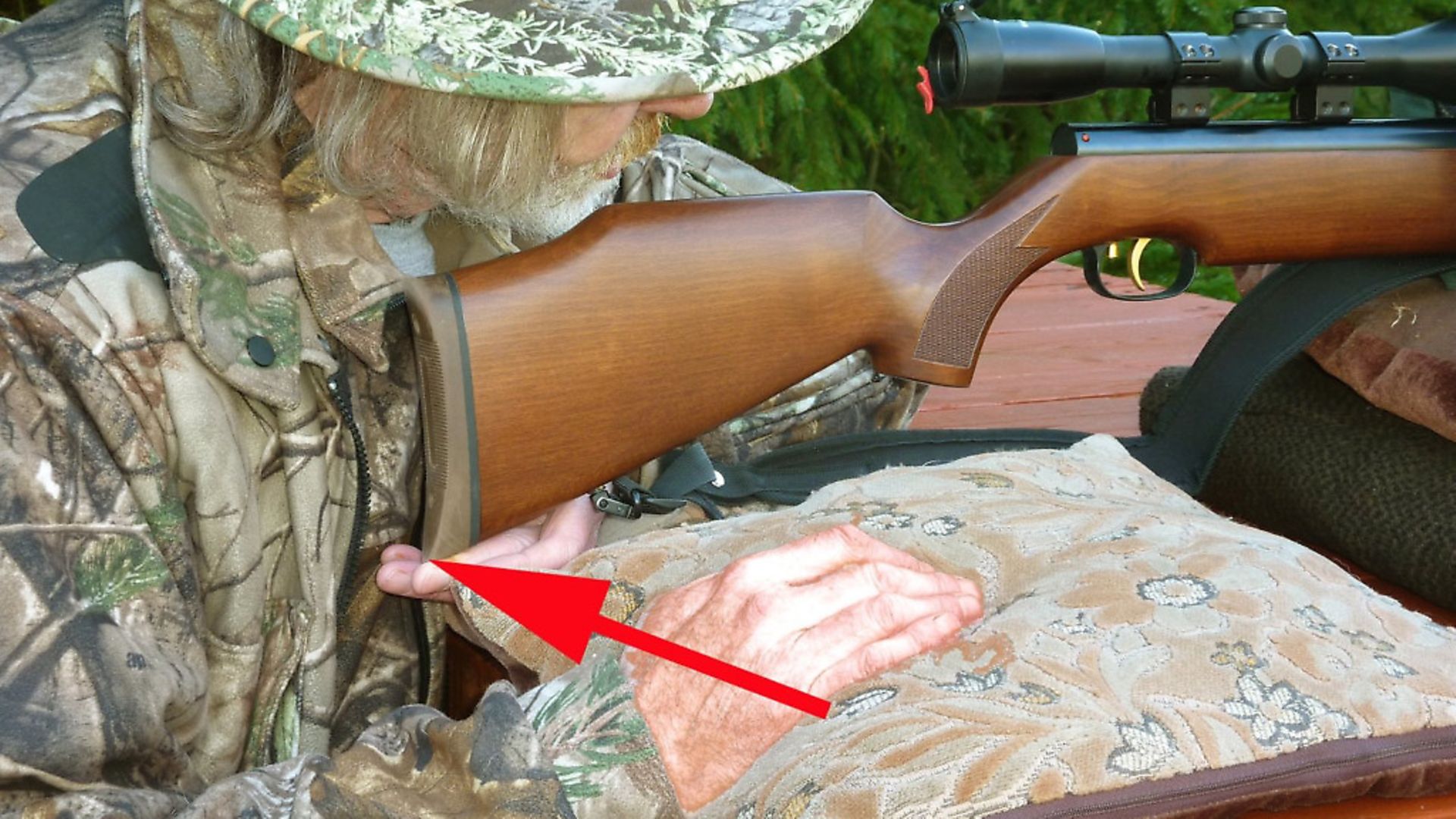 credit: Archant
credit: Archant
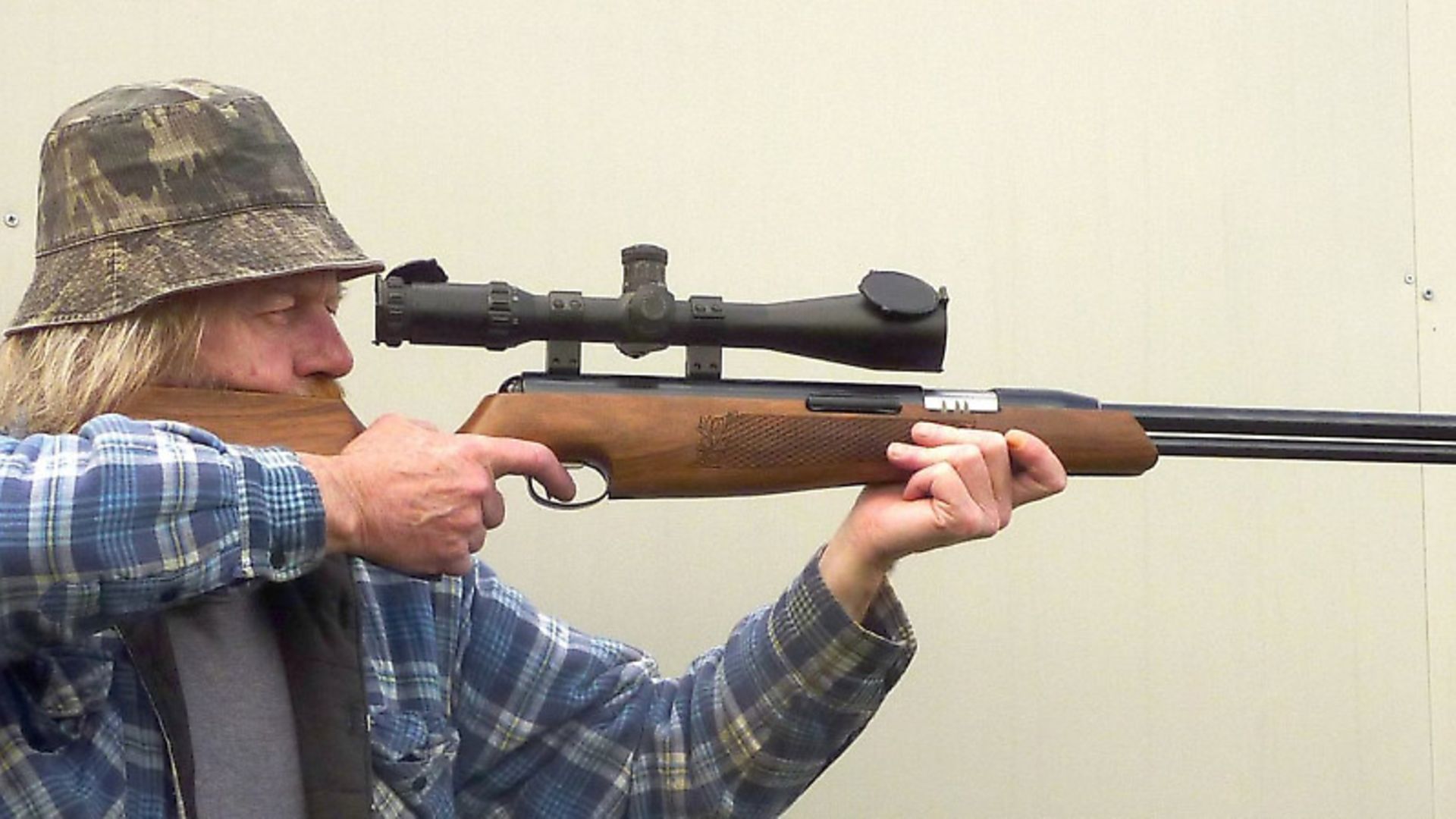 credit: Archant
credit: Archant
how many pellets make a GROUP?
I have seen pictures of three pellet holes described as ‘groups’, but three shots prove nothing in my opinion, because it could well be a fluke, and the more shots a group contains, the less likely it is to be a fluke. I consider five shots to be an absolute minimum, and ten much more satisfactory, because it’s rare to get ten fluke shots on the trot!
Having shot a group, you now need some way to measure it. I’m aware of smartphone applications that allow the user to photograph a group, input some data, and the app calculates group size for you, but maybe I’m old-fashioned, because I much prefer to use a calliper to measure the group size. I measure from the outer edges of the two most separated pellets in the group, and subtract the pellet diameter to get centre-to-centre separation.
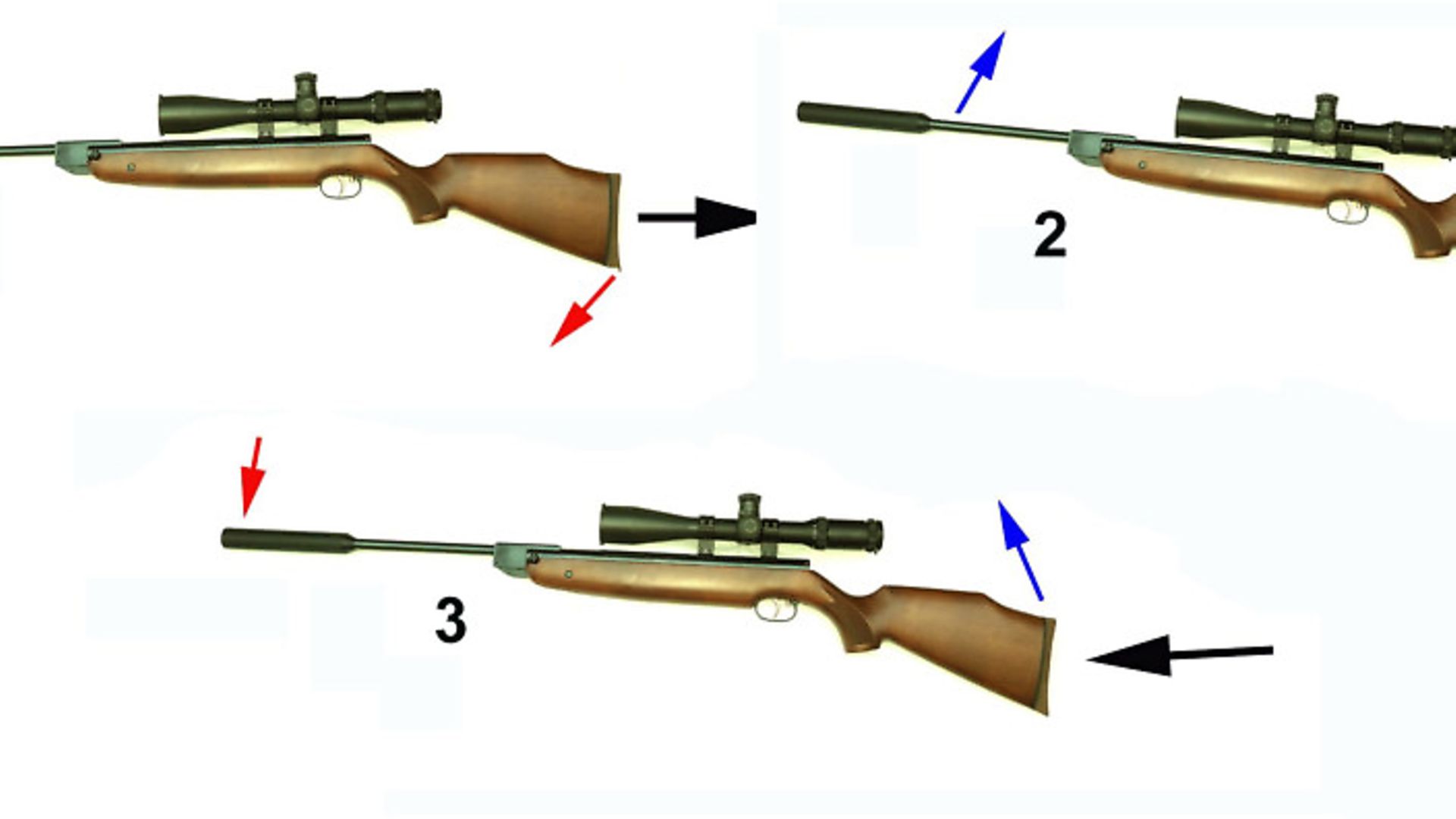 credit: Archant
credit: Archant
should i include FLIERS in my grouping?
Fliers (single pellets that land well outside a group) pose a dilemma, which is whether or not to include them in the group. Sometimes, you know that you pulled the shot, or that there was a gust of wind, in which case it’s obvious the flier should be ignored, but if there is no apparent cause of the flier, it’s best to shoot more groups, and if you get more fliers, then include them in the group size.
In truth, fliers from spring airguns are more often caused by the user than the rifle, scope or pellet, although it is far from unknown for odd pellets to be misshaped, something that should be apparent as you pick the pellet up and hold it between the pads of your finger and thumb. If fliers are persistent with a batch of pellets, a visual inspection might reveal dents in the skirts of some of the pellets, which is usually caused during transit rather than manufacture. If a tin contains one pellet with a misshapen skirt, it will normally contain more, so a visual inspection is in order before loading each pellet.
If a pellet offers more, or less, resistance when you thumb it into the breech, I would shoot it away from the group, because there’s a good chance it will prove a flier.
‘FIELD’ ACCURACY
Having tested a range of 1980’s springers, the big surprise was that the HW77 was not the most accurate, nor even the second most accurate (the Anschutz 335), yet it was trouncing springers, that fared better from the bench, in early field-target competitions. Clearly, there was more than one kind of accuracy which, at the time, I referred to as ‘bench’ and ‘field’ accuracy.
In my bench rest tests I had endeavoured to remove inaccuracy caused by my less than perfect technique, and in this I had been wildly successful and had ended up actually testing the barrel, completely ignoring the role of recoil in accuracy away from the bench, which varies between considerable and huge.
The severity of negative influence of recoil on accuracy varies according to how the rifle is supported. In the FT (field target) sitting position, which can be incredibly stable and forgiving once mastered, recoil has less influence than in kneeling, prone and standing shots. The severity of negative influence of recoil on accuracy also varies with even minute changes in hold from shot to shot, whatever the shooting position. The propensity of a springer to move the pellet point of impact (POI) according to how it is held is referred to as ‘hold sensitivity’.
Hold sensitivity is caused by a springer’s recoil; that much we know, but what is less clear cut is whether it is caused by the displacement (travel), the accelerations into recoil and surge or, as I strongly suspect, a combination of these. Few people can measure recoil displacement and acceleration: I can measure both, and the early evidence is pointing toward either displacement or acceleration in excess exacerbating hold sensitivity.
As a very general rule, for any given springer and muzzle energy, lower displacement seems to be accompanied by higher acceleration, and vice-versa, and it may be the case that there exists a happy medium of moderate displacement and acceleration that minimises hold sensitivity.
It is difficult to get an objective measure of field accuracy, because it is difficult to exactly replicate how the rifle is supported/restrained over a series of shots. Perhaps the second-best way is to shoot from the bench, but with the rifle fore end rested on the leading hand, itself rested on cushions, and to vary the position of the leading hand back and forth along the fore end, and test for POI shift. The best way of gauging field accuracy takes a little longer.
ACID TEST
The acid test of springer accuracy has to be the test of time in field conditions, and there is no finer vehicle for this than a full year of Hunter Field Target (HFT) competition, which not only tests field accuracy, but also reliability and resistance to temperature fluctuations, both vital considerations not only for HFT shooters, but also airgun hunters.
In competitive HFT, you are gauging the field accuracy, reliability and temperature resistance of your own air rifle, and those of all the other springer shooters. It’s easy to spot those whose rifles are wanting in field accuracy, reliability and/or temperature resistance, because they are the ones who keep modifying their rifles throughout the course of a season, some on almost a weekly basis. What’s more, recoil HFT shooters (a very friendly bunch) tend to be very amenable to discussing what modifications their rifles have had, and what the effects were.
Springer accuracy is a very complex issue, and has as much to do with how, and in which branch of the sport, rifles are used, as the intrinsic accuracy potential of the barrel.